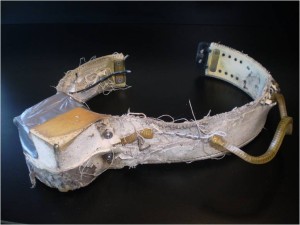Email: amccall@ualberta.ca
Alysa is currently the Field Programs Manager for Polar Bears International.
Polar bear distribution and habitat selection in Hudson Bay- M.Sc. Project
Habitat selection by animals may be highly variable across space and time, especially with dynamic environments such as sea ice. Polar bears (Ursus maritimus) depend on sea ice for foraging, travelling, and some aspects of reproduction. However, many parts of the Arctic are experiencing warming temperatures and altered atmospheric circulation, resulting in considerable changes in the extent, duration, and character of sea ice.
Changes in the distribution and abundance of sea ice has been linked to changes in body condition, growth, survival and reproduction in polar bears. Thus, understanding how changes in sea ice alter changes in habitat selection in polar bears over space and time is important for the management of this species, especially those populations near the southern limit of the species’ range such as the Western Hudson Bay (WH) population.
The sea ice in Hudson Bay has been melting earlier over the last three decades in response to climate warming, and the WH population has declined from 1200 (in 1984) to 935 (in 2004) animals in association with the earlier break-up of sea ice and unsustainable harvest in Nunavut. While the WH polar bears have been relatively well studied on land, there has been no examination of their habitat selection on the sea ice in Hudson Bay.
The objectives of this study were to: 1) analyze temporal variation in polar bear distribution in Hudson Bay and 2) quantify patterns of polar bear habitat selection on the sea ice in this region, to determine if and how they have responded to changing sea ice conditions. This study examined seasonal distributions of the bears using GPS satellite-linked telemetry collar data in relation to sea ice characteristics.
Studying this population allows us to examine the complex relationship between sea ice extent and population ecology of polar bears. This research provides knowledge about how other polar bear populations may respond to changing sea ice conditions throughout the Arctic. A habitat assessment of WH polar bears will 1) assist in identifying critical polar bear habitat and 2) provide a better understanding of how climate change and associated changes in ice condition affect polar bear distribution and movement patterns.


